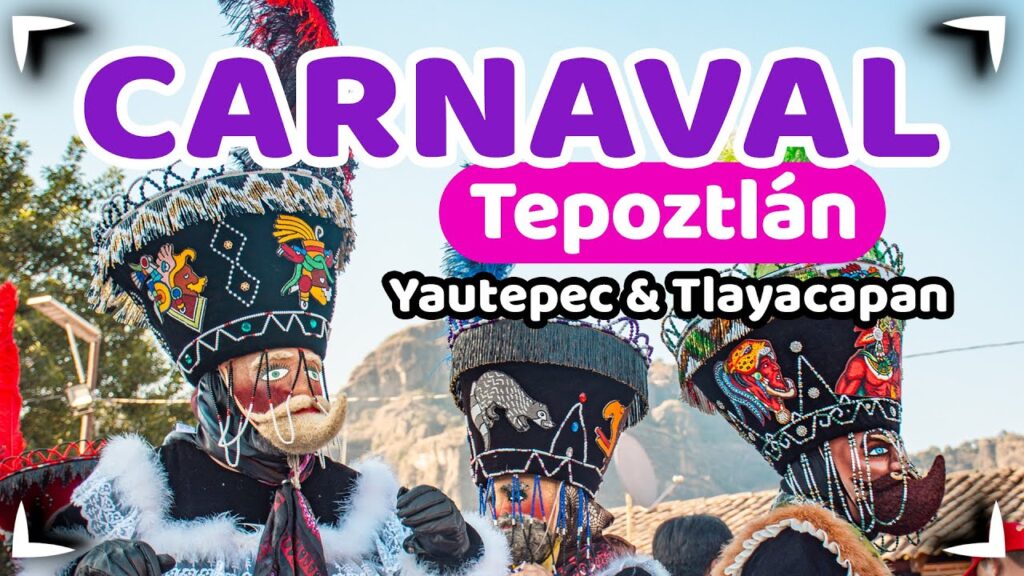Celebrating Tradition: Unmissable Festivals in Mexico’s Magical Towns
Mexico is not only famed for its vibrant culture and rich history but also for the numerous traditional festivals that take place in its magical towns, each of which offers a unique blend of religious ceremonies, ancient customs, and modern festivity. One of the most iconic celebrations you might stumble upon is the ‘Day of the Dead’ festival in Pátzcuaro. This town is transformed into a picturesque tableau of reverence and celebration as locals honor their departed loved ones with candle-lit boats on the lake, intricately designed altars, and colorful marigold paths leading to the local cemeteries. The blend of indigenous Purepecha traditions with Catholic beliefs creates a one-of-a-kind event that leaves a profound impact on all who witness it.
Another can’t-miss event is the ‘International Cervantino Festival’ held in the colonial city of Guanajuato. Recognized as one of Latin America’s biggest cultural celebrations, it was originally inspired by the works of Miguel de Cervantes, the famed Spanish writer. Today, the festival has grown to showcase a wide array of performances including theater, music, dance, and visual arts from around the world. The city’s historical venues and open plazas burst into life with the sights and sounds of endless creativity, offering festival-goers a spectacular cultural feast.
Perhaps one of the most exhilarating experiences for thrill-seekers is the ‘Pamplonada’ in San Miguel de Allende, which is Mexico’s own version of Spain’s Running of the Bulls. Every September, adrenaline runs high as people from across the globe flock to the cobblestone streets to either partake in or witness the heart-pounding chase of man against bull. Despite the inherent dangers, the event is imbued with a sense of camaraderie and festivity, adorned with music, dance, and the ever-present Mexican spirit of bravura.
Experience the Vibrancy of Mexican Culture at These Enchanting Festivals
When it comes to cultural experiences that captivate the senses, Mexico’s vibrant festivals stand out as some of the most colorful and exhilarating in the world. These festivities, ingrained in the nation’s cultural fabric, not only offer a glimpse into Mexico’s rich traditions but also provide an opportunity for visitors to immerse themselves in the joyous atmosphere that epitomizes Mexican hospitality.
Day of the Dead (Día de Muertos) is perhaps the most internationally recognized of Mexican festivals, but its significance extends far beyond the borders of mainstream popularity. Celebrated at the beginning of November, this festival honors the deceased with lively celebrations, ornate altars known as ofrendas, and streets filled with marigold flowers and sugar skulls. It’s a poignant testament to how Mexican culture embraces mortality and celebrates life.
No less significant is the Guelaguetza festival, held in the city of Oaxaca. This indigenous cultural event, occurring in July, is a riot of color and traditional dance, showcasing the regional diversity of Oaxaca through music, native attire, and culinary delights. Visitors are often spellbound by the mesmerizing performances of local dance troupes, all sharing their heritage with pride and joy.
In the Yucatán Peninsula, the Hanal Pixán is a version of the Day of the Dead that incorporates Mayan traditions into the celebration. Families prepare a special feast that includes the favorite dishes of the deceased loved ones, and the event is marked by candlelit processions and the evocative sounds of Mayan music, creating an unforgettable experience for those who partake in the festivities.
One cannot overlook the exuberance of Carnaval, especially as celebrated in the port city of Veracruz. During the week leading up to Lent, the city explodes in a spectacle of dance, music, and parades. Flamboyantly dressed dancers move to the rhythms of salsa, cumbia, and danzón, while the laughter and cheers of the crowd fill the air, underscoring the infectious spirit of Mexican revelry.
The Best Fiestas, Festivals, and Carnivals in Mexico’s Pueblos Mágicos
Mexico’s Pueblos Mágicos, or “Magical Towns,” are well known for their enchanting beauty, rich history, and vibrant cultural legacies. Among the most exciting aspects of these towns are their colorful and lively fiestas, festivals, and carnivals. Across the nation, each Pueblo Mágico offers a unique blend of Indigenous and Spanish traditions that manifest in their celebrations, making them a must-visit for those seeking the authentic essence of Mexican festivity.
One of the most spectacular festivals takes place in the Pueblo Mágico of San Cristóbal de las Casas in Chiapas. Each year, the town is illuminated with the Festival de las Linternas, or Lantern Festival, where the night sky is filled with the glow of thousands of paper lanterns. This tradition, reminiscent of Asian influence due to historic trade, is a truly magical sight to behold, symbolizing hope and dreams for the year to come.
Further north, in the quaint cobblestone streets of Taxco, Guerrero, the Feria Nacional de la Plata, or National Silver Fair, shines bright. Taxco is known for its exquisite silverwork, and during the fair, silver artisans from across the country gather to showcase their craftsmanship. Excitement fills the air with live music, traditional dances, and of course, the crowning of the Reina de la Plata, or Silver Queen. Visitors can marvel at the artisanal jewelry and perhaps even take home a piece of Taxco’s finest.
Perhaps the most internationally recognized carnival is the exhilarating Carnaval de Veracruz. With origins tracing back to the colonial era, this is a high-spirited event filled with vibrant costumes, Afro-Caribbean rhythms, and a joyous parade known as “La Gran Vía.” Intoxicating conga music, samba beats, and salsa dance ensure that the Carnaval de Veracruz is a rhythmic celebration that captivates all who partake. The liveliness and exuberance of the parades are incomparable, solidifying it as a leading festive experience within Mexico’s Pueblos Mágicos.
Discover the Spirit of Mexico: Must-See Fiestas in Magical Villages
Embarking on a journey through Mexico’s quaint magical villages, or ‘Pueblos Mágicos’, unveils a vibrant tapestry of culture and festivity that will ignite the wanderlust in every traveler. These picturesque towns offer a unique glimpse into the nation’s soul, where age-old traditions and lively celebrations paint an authentic picture of Mexican life. Each village hosts its own myriad of spirited fiestas throughout the year, reflecting the local history, folklore, and communal spirit that are integral to the Mexican identity.
The ‘Guelaguetza’ festival in Oaxaca is a dazzling spectacle of indigenous culture and community. Held every July, this event showcases traditional costumes, folk dances, and regional music, with participants from the seven regions of Oaxaca coming together in a colorful display of unity and heritage. The festival is renowned for its ‘Danza de los Diablos’ (Dance of the Devils), a performance that is as mesmerizing as it is symbolic, capturing the essence of indigenous storytelling and its ongoing relevance in contemporary society.
San Cristóbal de las Casas in Chiapas serves as the stage for the enthralling ‘Fiesta de San Cristóbal’. Religious processions, marimba music, and cascades of fireworks transform the town into a vibrant epicenter of festivity every July. Artisans from surrounding villages bring their beautifully crafted wares to the fair, while locals and tourists alike are captivated by the ‘Parachicos’ dance, a traditional dance that has been declared an Intangible Cultural Heritage by UNESCO.
No fiesta captures the essence of Mexican culture quite like ‘Día de los Muertos’ (Day of the Dead), and the celebrations in the magical town of Patzcuaro are particularly poignant. On the 1st and 2nd of November, the townspeople honor the departed with elaborate altars and offerings, while the night is lit by a flotilla of candles set adrift on Lake Patzcuaro. The experience is both hauntingly beautiful and deeply moving, offering a profound reflection on life, death, and the eternal cycle of existence.
Finally, the ‘Fiesta de la Candelaria’ in Tlacotalpan is a February feast for the senses. This festival, dedicated to the Virgin of Candelaria, is a blend of Spanish and Afro-Cuban influences, featuring bullfights, flamboyantly dressed ‘mascaradas’, and the joyous rhythms of ‘son jarocho’ music. This celebration is particularly noteworthy for its elaborate floral decorations that adorn boats, homes, and public buildings, seemingly transforming the whole town into a blooming garden in honor of the Virgin.



